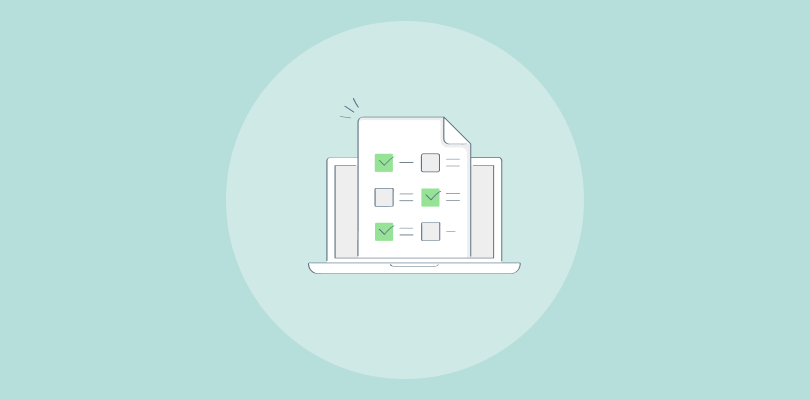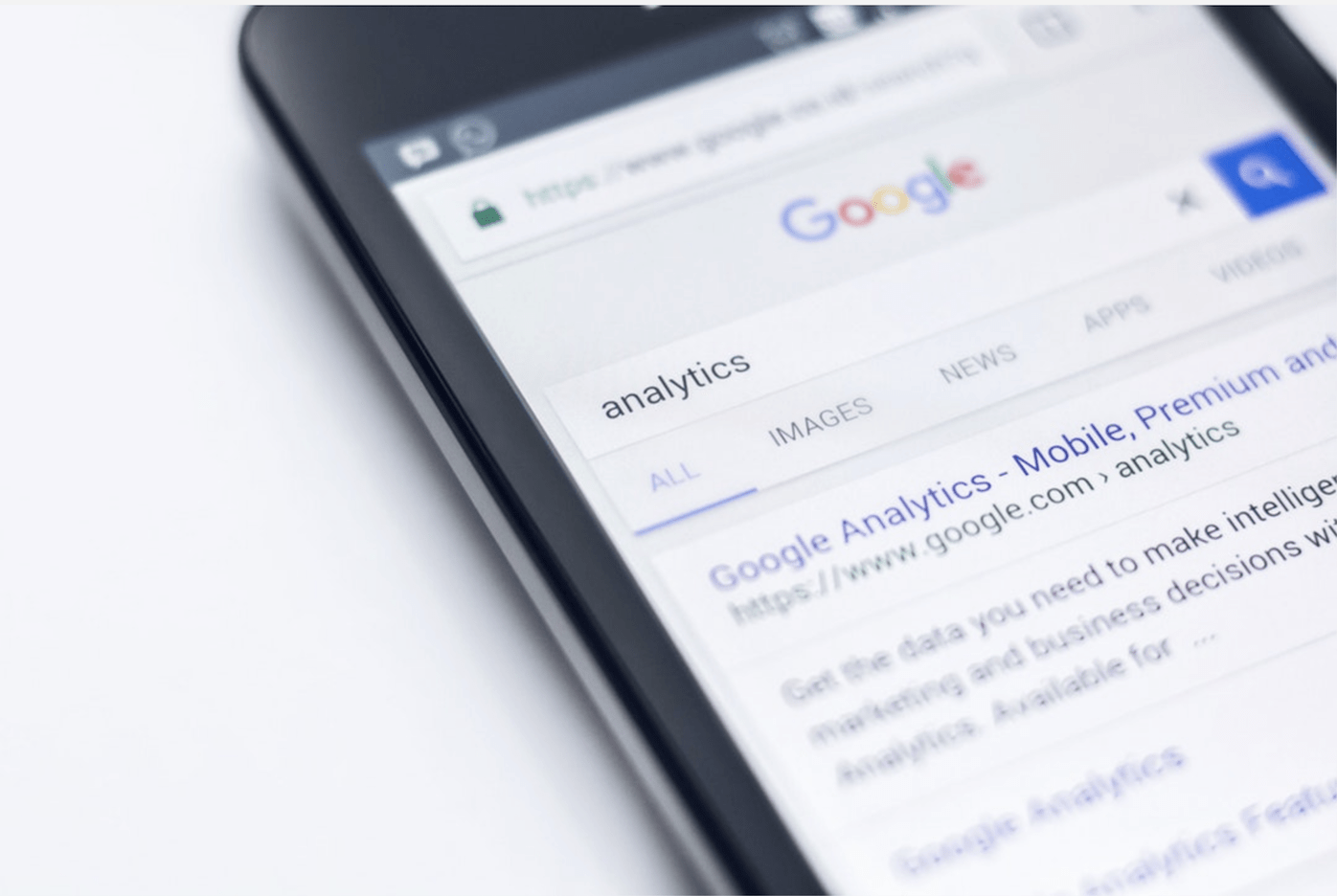If you want loyal brand ambassadors and not just one-time customers for your B2B or B2C setup, you need to have customer success management in place.
From the small things like resolving customer tickets in record time to more elaborate ambitions like creating a loyalty program, customer success strategies are what take your customer experience to another level.
One of the best ways to hit the mark is to choose great strategies that will give you a game plan to get to where you hope to be. So, how about we share some awesome customer success strategies that’ll prove foundational to your customer success management and experience?
Let’s get the ball rolling!
What Is Customer Success?
Customer success is a methodology that businesses use to ensure that customers can achieve their goals in the smoothest way possible with a brand experience worth remembering.
The methodology is based on platforms developed as derivatives of digital transformation strategies.
And so, customer success strategy revolves around boosting engagement and retention and optimizing the customer journey. It boils down to making your product/service a success for your customers to encourage loyalty and repeat business.
How about a real-life example to understand this?
Here’s the case study of Udemy and how it uses user feedback as a customer success strategy:
Udemy, an online learning platform, introduced users from around the globe to Machine Learning,-powered by auto-captioning.
But of course, merely introducing new features doesn’t mean that everyone’s lives become easier. Udemy turned to feedback software Qualaroo NudgesTM to collect users’ feedback. Here’s how it went in the words of Claire Menke, Director of UX Research for Udemy —
In doing so, Udemy ensured that all the customers could use their services without obstacles, making their online courses a hit.
Now, let’s have a look at the customer success strategy framework:
These are all the crucial touchpoints in the customer journey for which you need to create robust customer success strategies.
But wait a minute, doesn’t customer success sound like customer experience? And how is it different from customer service?
Customer Success vs. Customer Experience vs. Customer Service
Let’s clear the air about commonly used business terminologies and how they differ from customer success.
| Customer Success | Customer Experience | Customer Service |
| It helps companies understand the customer experience specific to their products and services. | It focuses on the holistic experience of customers with a brand from the beginning to the end of the customer journey. Every small interaction counts. | It’s centered around resolving customer pain points to make the customer and brand experience as seamless as possible. |
| It’s the customer’s journey with the products and services. | It’s the customer journey customers have with your brand from the beginning till the end. | Customer service is focused on resolving issues customers face in their customer journey. |
| Comes in after prospects have made a purchase and become customers. | Starts as soon as the first contact is made with the lead/prospect. | Can emerge in the first interaction when prospects need assistance through live chat or have queries. |
| It’s a proactive approach. | It’s both proactive and reactive. | Customer service is a reactive approach. |
Why You Can’t Ignore Customer Success Strategies
Before we discuss the great customer success strategies to direct your business towards exponential growth, it’s critical to understand why customer success is important. So, here are some major benefits of customer success methodology.
Boosts Repeat Business
Every business needs recurring (repeat) business to grow. And the only way to make your customers purchase from you on repeat is to give them an unparalleled product/service and experience.
You can’t expect to boost your renewal process by focusing only on things like the bounce rate of your website pages; you need to look closely into your product/service experience.
One of the critical customer success strategies is improving and tailoring your product/service by listening to the voice of the customers. Doing so adds to your product/service experience, with a high chance of renewal.
Besides, customers will repurchase if they see value in your product/services. Many companies opt for revenue models such as freemium, premium, free trials, and free demos to show customers what they will get in the product/service to motivate them to purchase.
Reduces Customer Churn
Customer success is all about ensuring customers a pleasant product/service experience. So, even if your customers hit an obstacle in their journey, your fool-proof customer success strategies will take care of it.
Customer success is an iterative process that helps businesses constantly improve their services/products using customer feedback.
For example, businesses launch new updates frequently in their products based on customers’ feedback as a part of their customer success strategies to ensure the offerings are precisely what customers need.
When you offer a seamless, hiccup-free product/service experience and incredible user experience across platforms, the chances of customer churn reduce significantly.
How to Start With Your Customer Success Strategies? [Expert Advice]
What’s better than getting the information straight from the horse’s mouth?
So, here’s what the Head of Customer Success at Entelo, Loni Spratt, has to say on how you can create your customer success strategies:
- According to her, you first need to explore your immediate needs: Is it onboarding, reducing churn, customer loyalty, etc.?
- Create your customer success team that can develop tailored processes and action plans.
- You need to align your customer success metrics with your business objectives.
- Always consider customer insights rather than just doing guesswork.
- Ensure a seamless flow of customer feedback and insights in the organization to align business goals and processes with customer needs.
FREE. All Features. FOREVER!
Try our Forever FREE account with all premium features!
14 Kickass Customer Success Strategies for Higher Retention
In the customer lifecycle, an impeccable experience is what wins customers. And a crucial part of this is product experience that determines customer success. So, if it’s something you want for your business, you should follow these 14 customer success strategies.
Let’s have a detailed look at each customer success strategy and how you can leverage it to boost engagement and retention.
1. Carefully Assess Customers’ Journey
One of the customer success best practices is to evaluate buyer personas constantly so you’re not missing out on crucial customer journeys. It’s a part of your user research to identify your ideal customers, which helps sieve out marketing and sales-qualified leads.
But why is it so critical to assess your customer journeys?
“You’re not a ‘customer-first’ if you don’t understand their paths to you.” — Russel Lolacher, Communications Director – BC Public Service.
A customer journey with gaps means a sales funnel with multiple leaks, costing you a big chunk of potential customers and revenue.
Moreover, your customer journey starts from the brand awareness stage, so without a clear idea of who you should target, you won’t be able to personalize your user experience.
If you want a product or service with a favorable conversion rate, you need to have an air-tight grip on your customer journeys and how you can optimize them.
Start with creating surveys using customer experience tools like Qualaroo to collect information about your ideal customers. Here are some things you can keep in mind while preparing questions for your buyer persona surveys:
- Who are you trying to target?
- What are the problems your customers face?
- What do your ideal customers value?
- What kind of content will resonate with them?
To create your buyer persona, you can ask questions like these:
- What do you want to achieve by using our product?
- What frustrates you during your work?
What tools are you normally using when encountering the problem?
Case Study: Belron
Belron is a vehicle windshield repair company operating online. The company had a very high bounce rate on the website, which didn’t make sense since the website visitors were people who needed to replace their damaged windshields.
So, Belron deployed Qualaroo’s exit-intent surveys to get to the bottom. Turns out, they had customer journeys that they were not aware of. So, they analyzed those journeys to optimize and align them with their business goals.
Bonus read: The Ultimate Guide to Customer Journey Map Guide
2. Don’t Just Collect; Act on the Feedback
We cannot stress enough the importance of analyzing the data for actionable insights. Since customer success is an iterative process, collecting customer insights is evitable.
But it’s of no use if you’re going to treat it as a pile of cold data. After collecting the data, customer feedback analysis is an unskippable step in the process.
You can use different methods to analyze the data. For example, if you’ve collected qualitative data using open-ended surveys, you can perform Sentiment Analysis to understand the customer emotions represented in the written feedback. This way, you can expedite the data analysis and quantify your qualitative data.
Bonus read: Qualitative vs. Quantitative Research: How to Get the Best of Both Worlds
Case Study: Hootsuite
HootSuite is a social media management platform that helps its users manage all their social media accounts on different platforms under one dashboard. The company saw a huge bounce rate on its landing page but had no clear explanation for it.
After deploying Qualaroo’s pop-up survey Nudges™ on their homepage, they found their landing page was not new visitor-friendly. It had all the information about their tool’s advanced features but didn’t explain what it did.
So, Hootsuite acted on the rich insights and was able to overhaul its landing page with changes to its messaging via text and visuals that brought positive results.
3. Manage Feedback Throughout the Company
In a way, customer success is a part of the overall customer experience. It helps a company stay focused and organized about its customers as individuals.
All customer-facing departments of the organization should be able to access customer data, which includes past customer interactions, sales pitches, tickets, and more.
Having a streamlined process for data sharing lets teams collaborate on resolving customer issues on the individual level, boosting your product/service’s success rate with customers.
For example, support personnel should be able to visit a customer’s past interactions to offer a tailored solution.
For this, customer relationship management tools such as BIGContacts are helpful. The teams can offer a holistic CX when they have a 360-degree view of customers’ experiences.
4. Exit Surveys to Reduce Churn
As we saw in the Belron case study, targeting the leaving customers is as crucial as acquiring new ones. Just like how Belron discovered three new customer journeys, you can also find critical insights hugely impacting your customer success.
Exit-intent surveys are an excellent way to target the leaving customers, resolve their issues, and motivate them to try out your offerings.
Let’s say a customer is looking for a specific feature in your product that isn’t explicitly mentioned on the product description page. Using exit-intent surveys right when the customer is about to leave the website, you can re-engage them and direct them to the desired information.
Case Study: GraphicSprings
GraphicSprings is a logo maker tool with a high bounce rate on its website. Since every visitor is a potential lead, GraphicSprings wasn’t ready to lose these prospects.
Using exit-intent surveys from Qualaroo, it collected emails from the leaving customers and re-targeted them with its email campaign.
Result?
It saw a 4% increase in the shopping cart abandonment rate in one week itself.
Watch: Qualaroo Exit survey recipes
5. Use Marketing to Educate Your Customers
Don’t make the mistake of thinking that people aware of your product/service’s usage are the only ones you should target. Some customers aren’t aware of their challenges and that your solution is an option to resolve them.
So, what can you do to spread awareness about your product and the challenges it resolves? Inbound content marketing.
Marketing is not just about promoting your products but is one of the excellent customer success strategies to educate prospects about your industry, business, and your product/service’s use cases. A content strategist can play a key role in refining this approach by modifying existing content and ensuring it’s tailored to your audience. Content marketing includes detailed guides, E-Books, articles, guest posts, PPTs, videos, and more.
To spread awareness about different challenges your target audience faces, you can create TOFU (Top-of-the-funnel) content.
But, if your customers are already knowledgeable about your offerings, you can educate them on different use cases so they can optimize your product/services.
Educating your audience is a great strategy for customer success to boost engagement, lead generation, and conversion.
6. Provide a Great Onboarding Experience
A great customer experience extends way beyond the purchase stage. An effective customer success strategy must include optimizing the onboarding stage.
Think of it this way: Suppose you bought a media editing software, and soon as you download it, you’re clueless. You’re waiting for little animations to pop up on the screen to guide you through the features and functionality, but nothing happens.
Of course, you’ll figure out how to use the basic functionalities, but wouldn’t it have been great if you had brief training guiding you through the tool and its complex features?
A rudimentary or no onboarding process is one of the biggest UX mistakes you can make. It’s best to include assistance from your sales or product teams to guide the new customers and ensure they know how to optimize your offerings.
😀FUN INSIGHT!
Qualaroo offers a guided onboarding process with assistance from the customer support and product-expert teams to equip the users to reap the benefits of the tool fully.
Segment and its onboarding process (or the lack thereof) is a case in point. So, let’s see how the platform optimized its onboarding process as a part of its customer success strategies.
Case Study: Segment
Eleanor Dorfman, Head of Customer Expansion at Segment, talks at length in this podcast about how the customer success team at Segment leveraged feedback to explore the reasons for churn.
The customer success team started to dig deeper into the customer data and other factors and came across two major reasons:
- The product was underutilized. In the words of Eleanor, “…a fairly technically complex product that needs to be implemented well to be valuable….”
- The company had a high turnover rate because the customer-facing team and other teams had no idea of the value Segment offers.
That’s when they introduced an elaborate onboarding process where the customers were guided to understand the complex functionalities Segment is capable of offering and how businesses can leverage them to foster customer success.
All this also helped the team to boost product adoption and expansion along with the product experience.
To improve your onboarding stage, you can survey your users using questions like the ones below.
- How easy/difficult was it for you to use [Product] the first time?
- How easy/difficult was it for you to use our [Service Name] the first time?
- Do you feel our product/service is going to help you achieve your goals?
- Was our onboarding process helpful?
- Was anything crucial to your success we didn’t cover in the onboarding?
7. Track the Crucial Customer Metrics
How would you know where to focus for customer success if you have no clue what to look for?
That’s why you should have a crystal-clear view of the vital metrics for your customer success programs.
So, here are the customer satisfaction metrics you should consistently track to have beneficial customer success strategies:
Customer Engagement: To track the number of signups, completed onboardings, likes, shares, and retweets on social media, on-page activity, and more.
Net Promoter Score (NPS): To track customer loyalty and identify promoters and detractors.
Customer Effort Score (CES): To understand how easy or difficult it is to use your product/service.
Customer Satisfaction Score (CSAT): To track the level and quality of customer satisfaction.
- Customer Service Satisfaction (CSS): To gauge the quality of customer service
- Customer Churn Rate (CCR): To explore how many customers abandon your product/service and why.
- First Response Time: To track how long it takes your customer-facing teams to respond to a ticket.
- First Contact Resolution: To gauge the percentage of tickets resolved in the first interaction.
- Value Enhancement Score (VES): To explore customers’ perceptions towards your products and services.
You can read our guide on 11 crucial customer satisfaction metrics to learn about each one in detail.
8. Improve Your Self-Help Capabilities
If you think the speed of customer service isn’t significant, consider this:
A survey by Statista has revealed that 12% of customers consider ‘lack of speed’ to be the top cause of customer service frustration.
So, what do the industry leaders do to minimize their service wait time and offer good support?
They follow the self-help approach.
You can introduce different tools to take the load off your support team. For example, tools like ProProfs Chat and ProProfs knowledge Base are great options to help customers be independent and find answers on their own.
Customers can resolve their small queries using these tools while the personnel takes care of imminent, critical customers with problems the self-service tools can’t solve.
9. Personalize Your User Experience
Personalization has reached new heights: if your plane is still stuck on the first-name tokens, you won’t fly high in the long run.
There’s a strong reason why industry leaders like Google, Spotify, Duolingo, etc., invest so many resources in personalizing their experience.
Companies collect customer feedback extensively and use those insights to improve their personalization.
For example, Netflix analyzes customer preferences on the platform and recommends series and movies based on individual preferences.
Similarly, YouTube also tracks the kind of media each user consumes and recommends similar videos and music.
Now, the question is, at what stage can you collect the data required to optimize personalization beyond the basics?
You can launch surveys gauging the information you require if you have an onboarding process.
You’ll have an insight into users’ intentions and motivations for your product/service to mold your customer experience accordingly.
You should ensure your personalization strategy goes beyond the product/service and encompasses customer service, such as offering automated chat support with a tailored experience.
10. Make Customers Realize Your Value
The challenges Segment faced in the above case study directly resulted from the lack of value realization on both parts – employees and customers.
If the customers don’t realize the value of your product/service, they’ll drop your business like a hot potato.
So, don’t wait around hoping one day your customers will suddenly have this realization. Rather, take the proactive approach towards the value realization framework.
The value realization strategy includes value definition, delivery, realization, validation, and optimization. So, how can you make the customers realize the value of your product/service?
You can start from the marketing stage, where you educate the customers about the benefits instead of simply promoting your product/service features.
After that, you can guide your customers through the onboarding stage while highlighting the valuable features and how to optimize them.
Don’t forget to follow up on them every once in a while using surveys such as customer satisfaction scores or NPS to keep tabs on their product and user experience.
Relatable read: Follow up Survey Emails: The Best Way to Get More Responses
11. Prioritize Feature Requests
You must keep your product at the center as a customer success strategist. After all, your customer success depends on it.
You can follow one of the customer success best practices to track and implement the feature recommendations based on their priority.
You can prioritize these features depending on the:
- Frequency of request
- Resources required
- If and how much it aligns with your business objectives
Here’s Karina Norkaitienė, Customer Success Manager at MailerLite, expressing her thoughts on the same —
“We use Trello to register each feature request. We then rate them based on the number of requests, the time needed for development, and how it aligns with our vision: ‘Taking difficult problems and making them simple.’ This helps us prioritize requests and keep them actionable.”
12. Work on the Communication
Communication is key. It’s cliche but also true.
Whether it’s internal communication or communication with your customers, it should convey your brand’s vision, values, and objectives.
To ensure your product and customer success strategies are doing what they are supposed to, you need to have conversations that amount to something.
With clear internal communication, you’ll be able to streamline customer data sharing so that everyone is on the same page and can work towards common goals.
On the other end of the table, having effective communication with your customers boosts engagement and their understanding of your products/services and builds a positive relationship.
In the words of Gary McGrath, Customer Success Team lead at Kayako —
“Avoid the temptation to be overly ‘professional’ or ‘corporate’ through templated responses. It might look reasonable to you, but the customer on the receiving end sees a canned response by someone who’s just going through the motions.”
13. Focus on Customer Loyalty
Happy customers lead to a loyal customer base. And these happy customers can help with your customer success strategies.
Once you’ve tracked down your promoters and satisfied customers, you can request them to share their experiences and reviews.
But why even bother with collecting testimonials?
That’s because customers trust other customers over flashy marketing. It assures them that they are investing in the right product/service.
😀PRO TIP!
You can track customer metrics AND collect testimonials simultaneously using surveys. You can first send your primary survey and add a follow-up question asking for a detailed account of their experience with your brand.
14. Offer Equally Awesome Experience Throughout
Have you ever been conned into an experience where you’re promised everything under the sun, but the actual experience after the purchase is, well, blah?
If yes, welcome to the club. Some businesses go above and beyond in the initial stages of customer acquisition but fail to maintain a consistent experience.
If you set high expectations of customers when you are acquiring them, don’t forget to deliver and exceed those expectations when they become your customer.
Business Transformation Starts With Customer Success
Now that we’ve dealt all our cards, it’s your turn to play your move; to implement these effective customer success strategies by tailoring them for your business and its requirements.
In essence,
- Collect customer feedback (using different methods such as surveys and social media analysis)
- Don’t forget to analyze and act on the insights
- Prioritize customer requests as per relevance and resources
- Track the right metrics to stay on top of customer trends and behavior
- Educate customers to help them realize your product/service value
Small but consistent steps make a huge impact, and that’s all you need to do. Instead of getting overwhelmed by all these strategies for customer success, start with just one that you think is most relevant to your needs and watch as your success rates begin to flourish.
FREE. All Features. FOREVER!
Try our Forever FREE account with all premium features!

 We'd love your feedback!
We'd love your feedback! Thanks for your feedback!
Thanks for your feedback!







